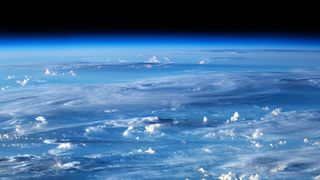The Federal Government has announced $41 million of funding to kickstart the Australian space sector over the next four years.
The $41 million of funding is allocated across:
- establishing the national space agency ($26 million over four years - $5.7 million in 2018/19, $9.8 million in 2019/20, $11.8 million in 2020/21 and $13.7 million in 2021/22)
- international space investment ($15 million for grants over three years).
As expected, the funding establishes a national space agency, and ex-CSIRO head Dr Megan Clark is tipped to serve as the inaugural head.
The space industry is worth more than A$400 billion per year, and plays an increasingly vital link in civil and military activity.
The surprise in the budget is the around $260 million investment in applying satellite data to Australia – mostly in precise positioning but also in satellite imagery.
The applications of space technology cover:
- $225 million for precise positioning technology that makes GPS signals accurate to centimetres, not metres, which unlocks efficiency and automation possibilities in agriculture, mining and transport
- $36.9 million to improve “Digital Earth Australia”, a platform that assembles global satellite images of Australia in a user-friendly and publicly accessible way.
End to ambivalence
This budget marks the first time Australia has had an official space agency, and puts an end to decades of Australian ambivalence towards civilian space.
The emphasis on industry shows the agency’s mission is to enable the growing Australian space sector to strut its stuff on a global stage.
The space industry is worth more than A$400 billion per year, and plays an increasingly vital link in civil and military activity.
Australian space businesses bidding for international work dread the question “why doesn’t Australia have an agency?” as it’s often the prelude to “without an agency it’s just too risky for us to work together”.
The government’s concept of a space agency is as an economic and national security play – it is not aimed as a catch-up attempt to lavishly funded international peers like NASA.
With this budget, the government is trying to walk a fine line between enabling successful Australian businesses in the high-tech space game, and creating a sector dependent on government largesse.
Four key aims of the space agency
The $41 million over four years is about the minimum viable amount to start towards these goals. Sensibly spent, it is enough to achieve the core aims of an Australian agency.
International credibility for Australian space: Australian space businesses bidding for international work dread the question “why doesn’t Australia have an agency?” as it’s often the prelude to “without an agency it’s just too risky for us to work together”. A funded agency takes this objection off the table and levels the playing field.
Support for Australian business: Early-stage grants to help businesses prove concepts – for example, to build a launch-ready small satellite – are within the means of this budget. This will help Australian startups cross the “valley of death” from concept to export-ready, space-tested hardware.
Federal and international coordination: A mix of state and federal agencies have a hand in civilian space activities; a funded agency will help impose order domestically and serve as a focal point for international engagement with other space agencies.
Long term strategic planning for the sector: Space is a long lead-time business. The agency will be responsible for strategic planning for the sector. The money will give its plans clout and an ability to nudge startups and universities into growth areas through funding allocations.
This is not the sort of funding for an agency that will be hiring engineers and building its own spacecraft. Most of the money will be spent in partnerships with commercial companies and universities to help get new ideas and good companies off the ground.
Some will be spent with international agencies to give Australia a “seat at the table” and a chance to bid for international contracts. These partnerships are the likely role of the $15 million earmarked for space investment.
The budget is light on detail and there are many unanswered questions, including:
- what areas will Australia focus on?
- where will key parts of the agency be located?
- what will the future of the agency look like after the four years?
I look forward to seeing these details in the near future.






